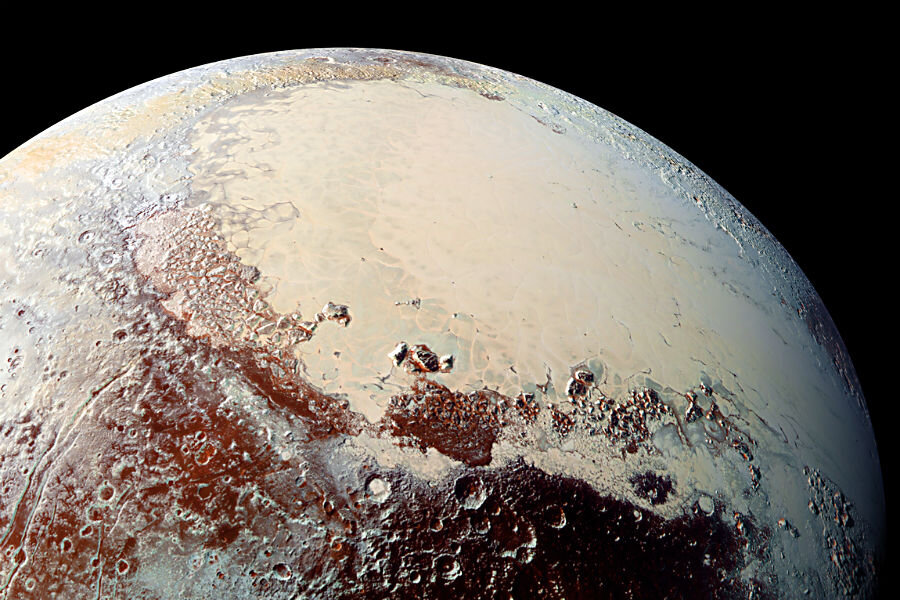Pluto has a lot more going on than we thought, say scientists
Loading...
As data about Pluto continues to arrive from NASA’s New Horizons probe, scientists are learning that the icy dwarf planet is far more geologically active than they thought.
Launched almost nine years ago to explore Pluto and other objects in the Kuiper Belt, a collection of comets, dwarf planets, and other frozen bodies beyond Neptune, New Horizons completed its flyby of Pluto last July. Most of the probe’s data, however, remains on the craft itself, as it uploads images and other data to Earth at 2 kilobits per second, a fraction of the speed of a dial-up modem. But the information New Horizons has already sent back has scientists reevaluating their conceptions of Pluto's formation and history.
“The New Horizons mission has taken what we thought we knew about Pluto and turned it upside down,” said Jim Green, director of planetary science at NASA Headquarters to the Johns Hopkins University Applied Physics Laboratory in November.
Since its discovery in 1930, Pluto has inspired scientific interest over the years, despite having its planetary status downgraded in 2006. Until recently though, study and observation of the dwarf planet have been difficult because of its small size and distance from Earth.
As data from New Horizons has begun returning to Earth, however, Pluto's particulars are becoming clearer to scientists. Along with high-resolution images of the surface, radar data and other measurements have helped scientists determine details about Pluto’s mass, diameter, and atmosphere.
With this new information, theories on the history of Pluto’s geology have surprised many who assumed the dwarf planet had not been active since its formation about four billion years ago. While some scientists previously thought that Pluto’s surface activity had ended long ago, in the new images, huge areas of the planetoid appear flat and unmarked, suggesting more recent geological development and a young surface that potentially could still be active long after its initial creation. The information raises new questions about how Pluto and similar objects in the outer reaches of the solar system initially formed.
As New Horizons’ data continues to arrive, scientists will use the information not only to learn about Pluto’s makeup and history, but also to find out more about Pluto’s Kuiper Belt neighbors. Kuiper Belt objects and plutoids continue to be discovered and classified, and there is hope that New Horizons will be able to inform the study of the outer reaches of the solar system as it journeys toward its next objective, 2014 MU69, a Kuiper Belt object less than two percent the size of Pluto. New Horizons is set to reach the object in 2019.
“It’s hard to imagine how rapidly our view of Pluto and its moons are evolving as new data stream in each week,” said New Horizons mission team leader Alan Stern of the Southwest Research Institute in Boulder, Colo. "As the discoveries pour in from those data, Pluto is becoming a star of the solar system."
“Moreover, I’d wager that for most planetary scientists, any one or two of our latest major findings on one world would be considered astounding. To have them all is simply incredible,” he said.







